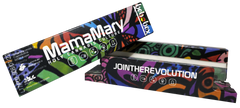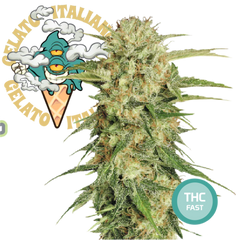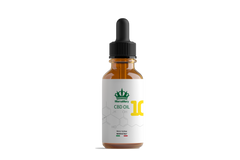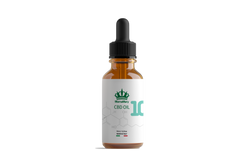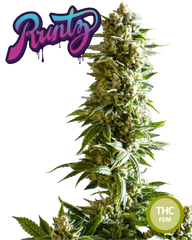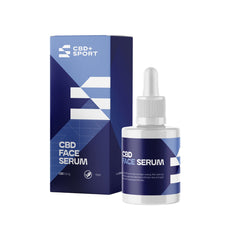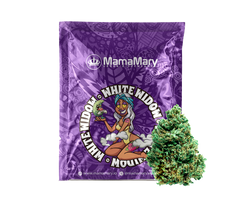Choosing the best nutrients for your cannabis can be daunting for first-time growers, often resulting in spending more money than is necessary. With so many options to choose from, ranging from hydroponics to organic nutrients , new growers can feel overwhelmed. But with a little knowledge about what cannabis plants need and how they absorb and use nutrients, you can confidently choose the products you need without breaking the bank.
What Elements Does a Cannabis Plant Need?

Your cannabis plant requires one main group of elements, collectively known as macronutrients . Below is a list of the mineral and non-mineral elements that your plant needs to be fed.
Mineral nutrients obtained from soil:
- Nitrogen (N)
- Phosphorus (P)
- Potassium (K)
- Soccer
- Magnesium
- Sulfur
Non-mineral elements derived from air and water:
- Coal
- Hydrogen
- Oxygen
The three numbers on fertilizer packets, nutrient solution bottles, or other additives indicate how much of the three main elements (nitrogen, phosphorus, and potassium) is in the product. For example, a product labeled “ 10-4-4 ” will contain 10% nitrogen, 4% phosphorus, and 4% potassium by weight. They are always listed in that order, NPK .
All other mineral nutrients are grouped into the category of micronutrients, as they are used in much smaller quantities. This group consists of the following elements:
- Zinc
- Iron
- Manganese
- Molybdenum
- Chlorine
- Cobalt
- Silicone
- Boron
- Copper
While cannabis plants require minimal concentrations of these elements to thrive, they are still vital to the overall health and growth of the plant.
Below we will look at the main types of nutrients used by cannabis growers today, as well as their appropriate use. Before you start growing, however, you will want to learn about the basic mechanisms by which plants absorb water and nutrients, osmosis and active transport.
Hydroponic (Soilless) Cannabis Nutrients

Hydroponics is simply the practice of growing plants without soil, usually through some other substance, such as rockwool, clay pebbles, coco coir, or some type of mix. Many of the premium “nutrients” sold for growing cannabis are actually soilless mixes. Most indoor cannabis growers use the hydroponics method, although they still use buckets of “nutrients” and water each plant.
For this reason, the majority of nutrients sold specifically for cannabis growing are hydroponic nutrients. These products include concentrated mineral salts, usually in liquid form but sometimes in powder form, that must be diluted in water to the right level for the plant.
Nutrients must be water soluble for the plant to absorb them. Liquid products are sold in two parts (usually labeled “part A” and “part B”) because they contain elements that will precipitate out of solution if mixed together at high concentrations, making them unusable. But this is not a problem if they are combined in the right amount of water.
The products are also divided into “Growth” solutions, with high concentrations of nitrogen, necessary for plant growth, and “Flower”, with high concentrations of phosphorus for flower development, because the cannabis plant needs different nutrients during the different stages of growth.
Care must be taken when applying hydroponic nutrients, as too much can cause damage or even death to the plant. A general rule of thumb is to start at about 25% of the level recommended on the product label, and gradually work your way up to 100%. Hydroponic nutrients are often used by soil growers with good results, but this technique is not recommended for beginners.
Soil and Organic Nutrients for Cannabis

What distinguishes soil from hydroponics is the presence of non-inert organic matter, such as humus , compost , manure , and vermicompost , which contain many macro and micronutrients. However, much of the nutritional value of these substances is in insoluble form, and must be processed by soil microbes and fungi in order to be useful to the plant. Non-organic nutrients created for soil growth are less common in nurseries because they can quickly harden in the soil, damaging soil life, and can prevent roots from absorbing water and nutrients.
Organic fertilizers and nutrients for cannabis are not forgiving; they usually contain indirectly soluble nutrients and other elements that are beneficial to soil organisms. The novice grower who decides to use soil as his growing medium should be careful to stick to organic fertilizers and nutrients.
The least expensive way to do this is to use things like blood meal and fish meal for nitrogen, bone meal and bat guano for phosphorus, wood ash and kelp meal for potassium, dolomite lime for calcium and magnesium, and magnesium sulfate as a source of magnesium and sulfur. Most of these items can be purchased cheaply at your local nursery and then mixed in small amounts into the soil before planting. If done correctly, you will then only need to water your plants and occasionally add carbohydrates to feed the soil life. There are also commercially available soil mixes that already have the right mix of these types of ingredients.
Alternatively, there are pre-mixed organic nutrient solutions you can buy that take the guesswork out of feeding your plants. They tend to be expensive, but the benefit is that you can simply follow the manufacturer’s feeding schedule and get good results.
The key to successfully growing organically is cultivating a diverse and bountiful population of soil microbes and mycorrhizae . Many premium potting mixes already contain these organisms, and there are many (often expensive) additive products available that will add life to your growing medium. However, the best (and cheapest) way to inoculate your soil is with AACT , or “ actively aerated compost tea ,” a watery compost you can make yourself with a few inexpensive supplies. Using this technique, you may find that you don’t need to add many nutrients or fertilizers; the soil life will process the organic matter in the soil into nutrients that the plant can readily absorb.
[embed]https://www.youtube.com/watch?v=bcQD0m9WfQE[/embed]
There are many ways to grow cannabis, and each has its benefits and drawbacks. Organic soil is more forgiving of mistakes and less-than-ideal conditions, but often results in smaller yields and slower growth. Hydroponic and synthetic nutrients can offer larger yields and faster flowering times, but require a lot of care and knowledge to be successful. The best advice for the novice grower when selecting nutrients and fertilizers is to make sure they are using products that are compatible with their technique and chosen medium, and that they are compatible with each other. Doing a little research before your first grow can save you money on unnecessary products. Happy growing!





